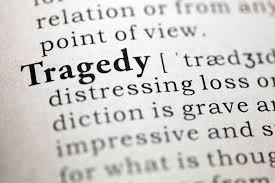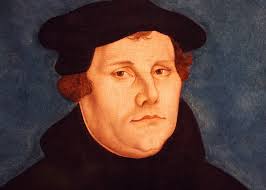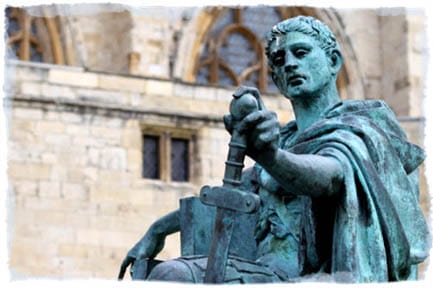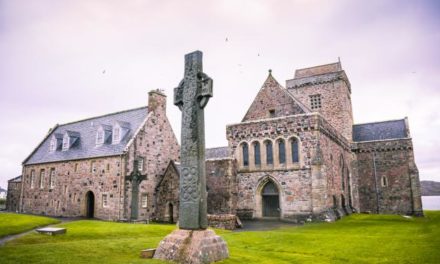The title of this episode is – A Needless Tragedy.
We backtrack now a bit. We’re going back to that period of European history following the Reformation called the Wars of Religion. We do so to take a look at a single day; Aug 24, 1572 in Paris, and the infamous event that happened then and there = the St. Bartholomew’s Day Massacre.
We do this because while it’s a lot more detailed look at something than we usually get into, it illustrates the impact the Reformation had on Europe and, I think, the Modern World.
John Calvin was French but his reforming work was centered in Geneva, Switzerland. It didn’t take long for his influence to spread back to his native homeland so that by 1555, Calvinism had firm roots there. French Calvinists were called Huguenots – a word of unknown origin but was meant as a mockery of Protestants. Calvinism spread rapidly and soon there were a couple thousand French Reformed churches with close to half the French switching from Catholic churches to Huguenot fellowships.
What made things difficult for the French Monarchy, which remained firmly Catholic, was that many of the nobility were Huguenots. Bear in mind that at that time, religious affiliation and political alignment were regarded by most Europeans as one and the same. A showdown between French Catholics and Protestants seemed inevitable.
Enter the scheming Queen Mother of France, Catherine de Medici; a die-hard Roman Catholic. She arranged for her daughter, Margaret of Valois, to be married on August 18th of 1572 to the Protestant King, Henry of Navarre. The hope in Paris was that this marriage would bring peace between warring Catholics and Protestants. Nobles who’d fought each other the previous decade turned out for the celebration. Thousands of Protestants came to Paris for the wedding, and the festivities lasted for days.
But while Catherine de Médici planned her daughter’s wedding, she was also plotted the assassination of Admiral Gaspard de Coligny [koh-LEE-nee], one of the main leaders of the Huguenots.
On Aug. 22nd, the assassination attempt failed. The plot, so soon after the royal wedding, threatened to badly embarrass the royal family. Near midnight the following day, Charles IX, the 22 yr-old French king and brother of the bride, in a fit of rage, screamed at his mother, “If you’re going to kill Coligny, why don’t you kill all the Huguenots in France, so there’ll be none left to hate me.”
Catherine wasn’t one to put up with the pique of her petulant son and decided to follow up on his suggestion. She ordered the murder of all Huguenot leaders still in Paris, including those who’d attended the wedding. The massacre began on Aug 24, 1572, St. Bartholomew’s Day. Admiral Coligny was murdered first as he knelt in prayer.
Many of the Huguenot nobles were lodged at the Louvre. They were called into the courtyard and shot one by one as they appeared. During the night, the homes of Paris Huguenots were each marked with white crosses. Before daybreak, messengers were sent throughout the city crying out, “Kill! Kill! The King commands it.” A murdering frenzy fell on the whole city. Entire Huguenot families were taken into the streets and murdered. The dawn of St. Bartholomew’s Day revealed many thousands of martyred Huguenots.
The craze spread to the provinces in the following days and weeks, the death toll somewhere between 30 and 40 thousand. Admiral Coligny’s head was embalmed and sent to Rome as a gift to Pope Gregory XIII. When it reached Rome, the Pope and his cardinals staged a Mass of Thanksgiving.
The massacre was not without cost to Charles IX. He began having horrific nightmares. In less than two years, he lay dying at the age of only 24. His last days were plagued with visions of his victims. He cried to his nurse, “What bloodshed, what murders! What evil counsel have I followed? O my God, forgive me!. . . I am lost!”
That’s the short version of the St. Bartholomew’s Day Massacre. Now for a little more depth.
The massacre marked a turning point in the French Wars of Religion. The Huguenot political movement was crippled by the loss of many of its most prominent leaders, as well as many re-conversions by commoners back to Catholicism while those who remained Protestant were increasingly radicalized.
Though by no means unique, the St. Bartholomew’s Day Massacre was the worst of the century’s religious atrocities. Throughout Europe, it impressed on Protestants the firm conviction Catholics were bloody and treacherous. But some of those Protestants ought to have seen how they treated other Protestants of a different flavor, as well as Catholics, with the same kind of brutality when they had the chance.
While the Saint Bartholomew’s Day Massacre seems a violent but quickly burnt-out fit of hatred, it was in truth the culmination of a series of events.
1st – The Peace of Saint-Germain in 1570 put an end to 3 years of terrible civil war between French Catholics and Protestants. But the peace was precarious since many Catholics refused to accept it. The famous Guise [gice] family led this faction and so fell out of favor at the French court. Meanwhile, the Huguenot political and military leader Admiral Gaspard de Coligny was readmitted to the king’s council in September of 1571.
Catholics were shocked by the return of Protestants to the court, but the king and queen mother, the afore-mentioned Charles IX and Catherine de Medici were determined not to let war break out again. Being were well aware of the kingdom’s financial difficulties, they knew more war would bankrupt them so they were determined to stay friendly with Coligny. The Huguenots were in a strong defensive position as they controlled not a few of the fortified towns across France.
To cement the peace between the two groups, Catherine offered to marry her daughter Margaret to the Protestant prince Henry of Navarre, the future King Henry IV. The royal marriage was arranged for 18 August 1572. But it was rejected by staunch Catholics. Both the Pope and King Philip II of Spain strongly condemned Catherine’s plan.
2nd – The impending marriage led to the gathering of a large number of well-born Protestants in Paris, who’d come to escort their prince. But Paris was a violently anti-Huguenot city, and Parisians, who tended to be extreme Catholics, found their presence unacceptable. Encouraged by Catholic preachers, they were horrified at the marriage of a Catholic princess to a Protestant. The French Parliament snubbed the marriage ceremony altogether.
3rd – Compounding this bad feeling was the fact that recent harvests were poor and taxes had risen to pay for civil wars. The rise in food prices, set against the backdrop of the obscene luxury displayed by the nobles on the occasion of the royal wedding increased tension among the people. A particular point of complaint was a cross erected on the site of the house of Philippe de Gastines, a Huguenot martyred a couple yrs before. A mob tore down his house and erected a large wooden cross in its place. Under the terms of the Peace of Saint-Germain, the cross was removed in Dec. 1571. That led to riots that killed fifty and saw massive property damage. In the massacre of St. Bartholomew’s Day, relatives of the Gastines family were among the first to be killed by the mob.
4th – The royal court itself was divided. Catherine hadn’t obtained the Pope’s permission for the royal marriage; so the French clergy hesitated about what to do. It took all Catherine’s considerable skill to convince Cardinal de Bourbon to officiate the wedding ceremony. And note who were’ talking about here. This is Catherine DE MEDICI, of the eminently famous and powerful Italian banking family.
5th – In the years leading up to the massacre, Huguenot political rhetoric had for the first time taken a tone against, not just the policies of the monarchy, but following the trend of Protestant thought, toward monarchy in principle. This trend would grow greatly after the Massacre as the Huguenots laid blame for it at the foot of the throne.
6th – Tensions were further raised in May, 1572 when news reached Paris that a French Huguenot army under Louis of Nassau crossed into a Dutch province and captured a couple of Catholic strongholds. This was all so Louis could assist his brother William in his political ambitions. French Catholics were furious that all of France was being dragged into a war with the Netherlands and Spain they had nothing to do with.
All these ingredients mixed in the pot to produce a tension just waiting for a spark to ignite.
After the wedding on August 18, Coligny and leading Huguenots remained in Paris to discuss some grievances about the Peace of St. Germain with the king.
On the 22nd, an attempt was made on Coligny’s life as he made his way home from the Louvre. He was shot from the upstairs window of a home owned by the Guises and seriously wounded. The would-be assassin escaped in the confusion that followed.
The attempted assassination of Coligny triggered the crisis that led to the massacre. Coligny was the most respected Huguenot leader and enjoyed a close relationship with the king. Aware of the danger of reprisals from the Protestants, the king and his court visited Coligny on his sickbed and promised the culprits would be punished.
While Catherine was eating dinner, Protestants burst in to demand justice, some going so far as to threaten her. The fears of Huguenot reprisals grew in the palace. Coligny’s brother-in-law led a 4,000-strong army that was at that moment camped just outside the city, and though there’s no evidence it was planning to attack, Catholics feared it might take revenge on the Guises or the general populace of the city.
So that evening, Catherine held a meeting with her Italian advisers. On the evening of the 23rd, Catherine went to see the king to discuss the crisis. Though no details of the meeting survive, it seems Charles and his mother decided to eliminate the Protestant leaders, meaning between 2 and 3 dozen of the noblemen still in Paris. They thought this would gut the Huguenots of their leadership and leave the Protestants powerless. They hoped it would squelch any real attempts at attacking the royals.
Shortly after this decision, municipal authorities of Paris were summoned. They were ordered to shut the city gates and arm the citizenry in order to prevent any attempt at a Protestant uprising. The king’s Swiss Guard was given the task of killing a list of leading Protestants. It’s difficult to determine the exact chronology of events and know the moment the killing began. It seems a signal was given by ringing bells at a church near the Louvre. The Swiss guards expelled the Protestant nobles from the Louvre castle, then slaughtered them in the streets.
A group led by the Duke of Guise dragged Admiral Coligny from his bed, killed him, and threw his body out a window. And all the tension building since the Peace of St. Germain exploded in a wave of popular mob violence. Commoners hunted Protestants throughout the city, including women and children. Chains were used to block streets so Protestants couldn’t escape from their houses. The bodies of the dead were collected in carts and thrown into the Seine. The massacre in Paris lasted 3 days despite the king’s attempts to stop it.
The leading Huguenot prince, Henry of Navarre just 19 and newly married to Catherine’s daughter, was spared and pledged to convert to Catholicism. He later renounced his feigned conversion when he escaped the madhouse that was Paris.
On Aug 26th, the king fabricated an “official” version of events—saying that he ordered the massacre to thwart a Huguenot plot against the royal family. A celebration and parade were held, while the killings continued in parts of the city.
Although King Charles dispatched orders to the provincial governors on Aug. 24th to prevent violence and maintain the terms of the Peace of Saint-Germain, from August to October, massacres of Huguenots took place in a dozen French cities. In most of them, the killings swiftly followed the arrival of the news of the Paris massacre, but in some places there was a delay of a month.
In many cities across France, the loss to the Huguenot communities after the massacres was far larger than those actually killed. Because in the following weeks there were mass conversions to Catholicism. For instance, in Rouen [ruin], where a few hundred were killed, the Huguenot community shrank from over 16 thousand to fewer than 3 thousand as a result of conversions and emigration to safer cities and countries.
Soon afterward, both sides prepared for a fourth civil war, which began before the end of the year.
The St Bartholomew’s Day Massacre with the ensuing turmoil that fell out from the Reformation in all Europe went far in shaping the mindset of succeeding generations. You can make a good case for the emergence of the Enlightenment’s suspicion of religion because of the horrendous bad behavior of people in the name of God during the Wars of Religion.
Of course, as we’ve said in previous episodes, it was often politicians and power-hungry prelates who hid behind religion and used the name of God in a bald grab for temporal power. They knew the common people could be manipulated by a religious argument more easily than by admitting they just wanted more land or power. Today, politicians seek to dispatch their opponents by saying they’re wrong on this or that political issue. In 16th and 17th C Europe, they did so by accusing their opponents of heresy.
As we finish this episode, I again want to say thanks to all who’ve visited the CS FB page and given us a like. If you haven’t done that yet, let me encourage you to do so.
And if you use iTunes as your portal to CS, giving the podcast a review there goes a long way in getting the word out.
CS is sustained by your donation of any amount.
Thanks.







Hi there,
I am doing research on my French ancestry and would like to know if you could help me obtaining the list of names of the given to the Swiss Guard? That is to say, the names of the Protestant nobles from the Louvre castle.
Any help would be welcome.
Thank you
Ester,
Sorry I have no idea about how to get that information. Sorry.